It was likely a shaped charge based weapon fired at a spaced target array of plates, with those plates near the bottom (end) of the array. The jet produced by a shaped charge will start to particulate as it moves through space (air), this occurring more rapidly as it passes through an array of spaced plates. They jet eventually ends up as a series of tumbling particles, which deviate off (around) the original axis of the jet. The result is a series of impacts around a central point and a gradually-increasing diameter hole though the array. Shaped charge jets striking monolithic targets generally have a gradually reducing diameter hole, as the particles don't really get much time to deviate off the central axis an normal stand-off distances.
An explosively formed projectile (EFP) will break up in a similar manner when passing through a plate array, though the hole produced will generally be far larger in diameter. The diameter of the hole produced depends on the dimensions of the EFP before impact, its speed and what it's made of. Again when fired against monolithic targets EFPs generally produce a gradually reducing diameter hole.
A high-speed kinetic energy (KE) projectile, such as the core of an armour-piercing discarding sabot (APDS), or the penetrator rod (or rod assembly) of the armour-piercing fin-stabilised discarding sabot (APFSDS) projectile, will also break-up in a similar manner when passing though a spaced target array. Again when fired against monolithic targets APDS and APFSDS generally produce a gradually reducing diameter hole.
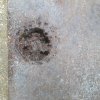 81BCB597-A29E-4249-BEF8-A52B0B168DBB.jpg303.2 KB · Views: 60
81BCB597-A29E-4249-BEF8-A52B0B168DBB.jpg303.2 KB · Views: 60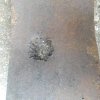 7F888260-4E74-4F2F-A861-D3BB65552188.jpg294.1 KB · Views: 49
7F888260-4E74-4F2F-A861-D3BB65552188.jpg294.1 KB · Views: 49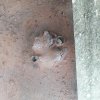 F56D98F8-FB5D-4C02-8345-16979C8035BD.jpg290.2 KB · Views: 44
F56D98F8-FB5D-4C02-8345-16979C8035BD.jpg290.2 KB · Views: 44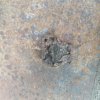 0A2EE0A2-FB95-419E-964C-62AD17E43251.jpg263 KB · Views: 42
0A2EE0A2-FB95-419E-964C-62AD17E43251.jpg263 KB · Views: 42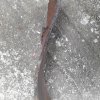 A6FFEF1F-283A-4B24-8DA4-47A7236F82E3.jpg315.6 KB · Views: 39
A6FFEF1F-283A-4B24-8DA4-47A7236F82E3.jpg315.6 KB · Views: 39
